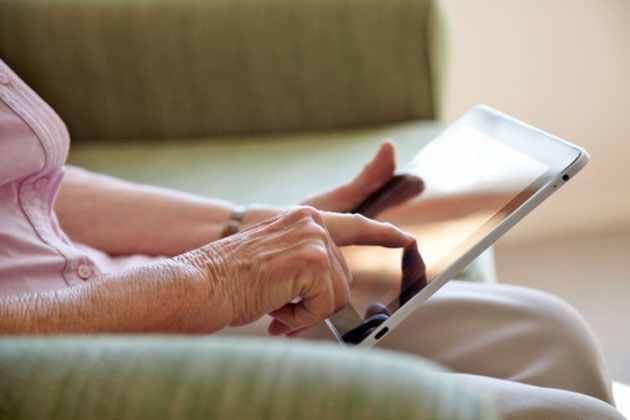Technology Helps Stroke Survivors Liberate Themselves

The discovery of the brain’s plasticity – its remarkable capacity to alter and compensate for injury – gives hope to survivors of stroke and traumatic brain injury. Each person faces a different challenge, depending on the function lost brain cells controlled. Now, therapists help them retrain their brains, forging new pathways to recover as much of their lost abilities as possible. And the sooner patients get to work, the better.
The Heart and Stroke Foundation of Canada estimates Canadians suffer 50,000 strokes annually, spend almost 639,000 days in hospital, then 4.5 million days in other care facilities. Only a third go from hospital to a rehabilitation centre, yet in Canada, best practice for stroke recovery is three hours of rehab a day.
Backed by an entrepreneurial leadership incubator called The Next 36, four university students have created StrokeLink, an iPad application stroke survivors can easily use in spite of their limitations. Designed to address the neurological deficits resulting from stroke, traumatic brain or spinal cord injury, it also motivates survivors to keep working. This rehab centre-in-a-tablet can be downloaded free through iTunes.
“It’s fun!” Anne-Marie Paquette says. She’s one of the students and co-founder and CEO of StrokeLink. “We’re trying to make therapy more engaging,” she points out.
The app has information about stroke for survivors, their family and friends, but its main function is to offer daily exercise programs patients can follow in audio, photo, video and text formats. A therapist can take photos with the iPad during a patient’s sessions to create customized programs. StrokeLink also times and tracks progress for a user (a psychological boost for a survivor).
During a pilot program at Hamilton Health Sciences Centre, iPads were left for patients to use. To Paquette’s delight, they chose to get together and work at their programs simultaneously. “Independent group therapy, which is phenomenal – and creating a social experience,” she smiles.
Certain aphasic patients, who couldn’t connect with carers because stroke disrupted their ability to communicate, are using the tablets.
“Stroke is not something we think to prepare for,” she says. “It happens, and you need to react to it.” Her small team continues upgrading the app – more people are surviving stroke and the burden of disability is rising. “We need to bring StrokeLink to the next level for these individuals. They deserve it,” she says.